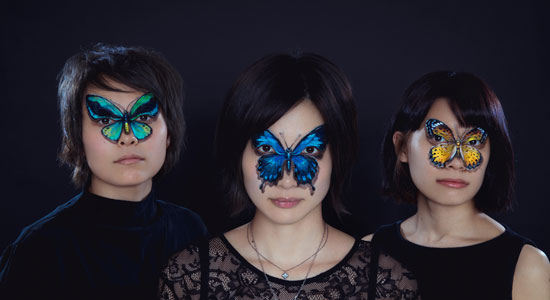
Japan’s tricot explore new dimensions of American math rock
As Japan’s tricot expand their profile westward—a recent licensing deal brings their third album, 3, from the Bakuretsu label to the U.K’.s Big Scary Monsters imprint as well as San Diego’s Topshelf Records—an intriguing chicken-or-egg story surrounds the Kyoto trio. The group’s sound appears indebted to the nonlinear angularity of Don Caballero, Battles and Tera Melos, albeit with a playfully poppy edge. But as the ladies collectively explain via translator in an email, they’d never heard of those bands—let alone the math-rock subgenre—until after they starting writing and playing music along those lines.
“As for the math-rock scene, [those bands] use their head and make smart, cool songs. But we are making songs a little more sensual without thinking too much. So, I don’t know if calling us math rock is suitable, but it is not uncomfortable.”
When asked about the genesis of the tricot sound, they reply, “It came across unexpectedly when we met. Our music is often called post-rock and math rock, but none of us are particularly familiar with those genres. Our songs are born naturally. Originally, we were influenced by Japanese pop music, rock and funk from overseas. Since tricot became categorized as math rock and post-rock, we started listening to math rock and post-rock.”
After finding their moniker in a French dictionary and undergoing some initial growing pains in finding an accepting audience (“When we started the band, we often thought, ‘Why don’t people understand our cool sound and style?’”), the band has learned to live with the fact it creates a challenging sound and its own inherent limitations, including not having a full-time drummer and recording its second album, 2015’s A N D, with five different people behind the kit. This, however, hasn’t stopped them from embarking upon a glut of overseas touring, with a return to Europe this summer/fall.
“What particularly impressed us about shows abroad is that the audience reaction is very straightforward,” they say. “In Japan, audiences are shy, do not express emotion and tend to keep in step with surroundings.”
—Kevin Stewart-Panko






